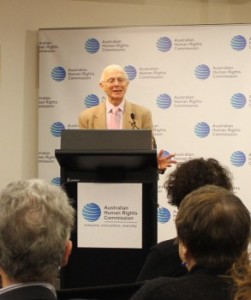The main union representing public servants says the Department of Human Services has removed a clause enshrining the employment of people from diverse backgrounds from its draft bargaining agreement.
The major department employing about 30,000 staff is being closely watched during negotiations because haggling over its future agreement, which was much further ahead than at many other Commonwealth employers, was expected to set at least part of the agenda across the federal bureaucracy.
The clause was one mechanism in the existing agreement to ensure the department enforced a separate plan, titled the Workplace Diversity and Inclusion Strategy.
The strategy has committed the department to employing more people with disabilities, mature age workers and staff from culturally and linguistically diverse background.
Its clearest goal was to make sure 5 per cent of its staff were Aboriginal or Torres Strait Islanders by 2015, which would mean the department would have more than 1500 indigenous workers out of its 34,700-strong workforce in a little more than a year.
The department said it was on track to exceed the 5 per cent target
“As at July 2014, the percentage of Aboriginal and Torres Strait Islander employees in the department was 4 per cent, well above the Australian Public Service average of 2.3 per cent as at June 2013,” a department spokeswoman said. “We are also a major employer of people with disability.
“As at July 2014, 4.9 per cent employees of the department identified as having a disability.
“We are a leader in workplace diversity in the Australian Public Service, and so we should be as a large department providing vital services to the community.
“Any suggestion that this is not the case is absolutely without substance.”
The Community and Public Sector Union’s log of claims for all its negotiations affecting 160,000 federal public servants said the union wanted to include a paragraph committing to diversity as well as recruitment and retention strategies.
The department spokeswoman said the public service bargaining framework, handed down by the Abbott government to set the boundaries for the bureaucracy’s managerial representatives during negotiations, clearly stated enterprise agreements should not include terms dealing with matters more properly dealt with by legislation.
“The department’s workplace diversity and inclusion strategy is in line with the legislative requirements set out in the Public Service Act 1999,” the spokeswoman said.
“This strategy is available on the department’s website and intranet.
“It is ingrained in our mandatory training schedule.
“This strategy is our formal commitment to a workplace culture that builds respects, fosters inclusiveness, promotes diversity and embraces the unique skills and qualities of all our employees.”















